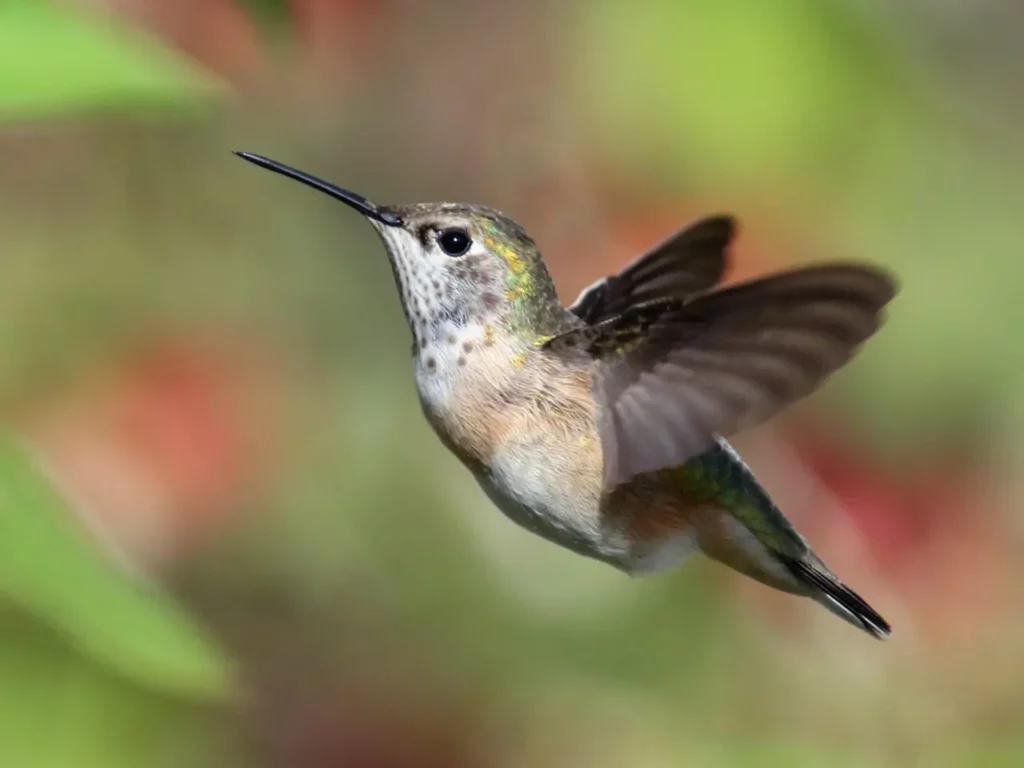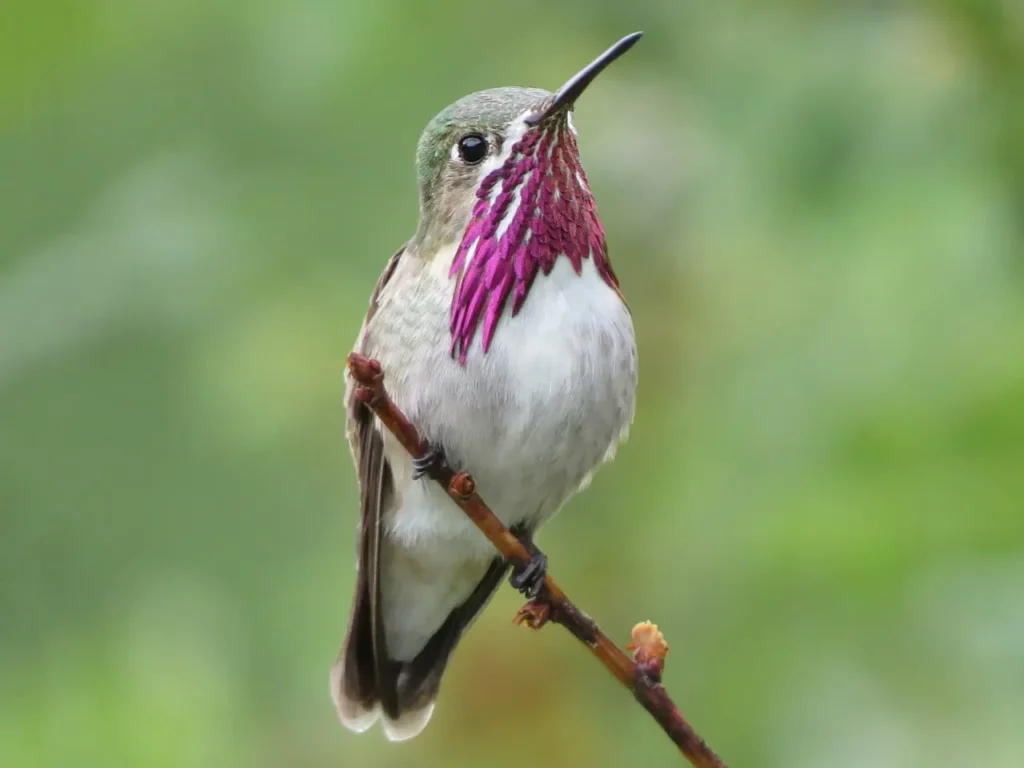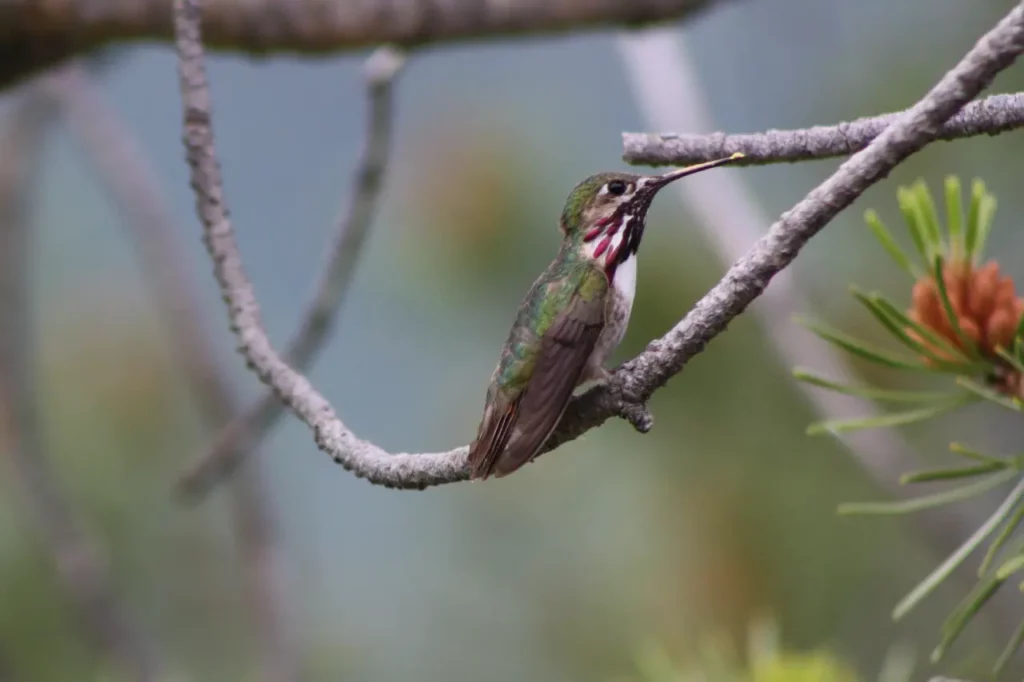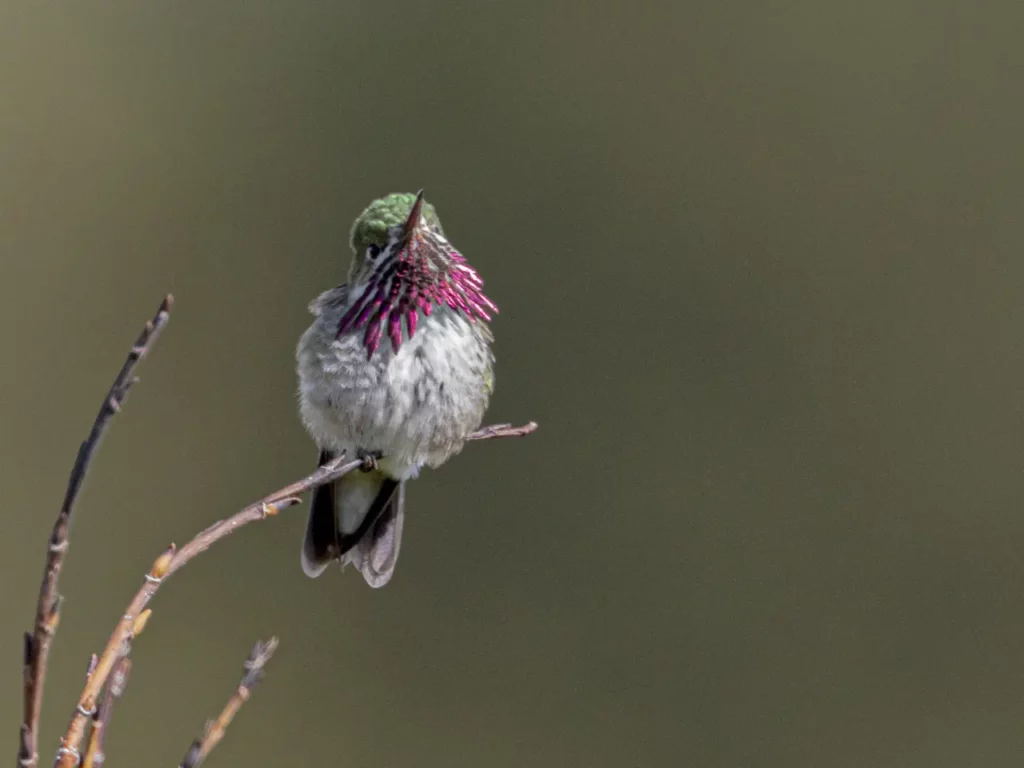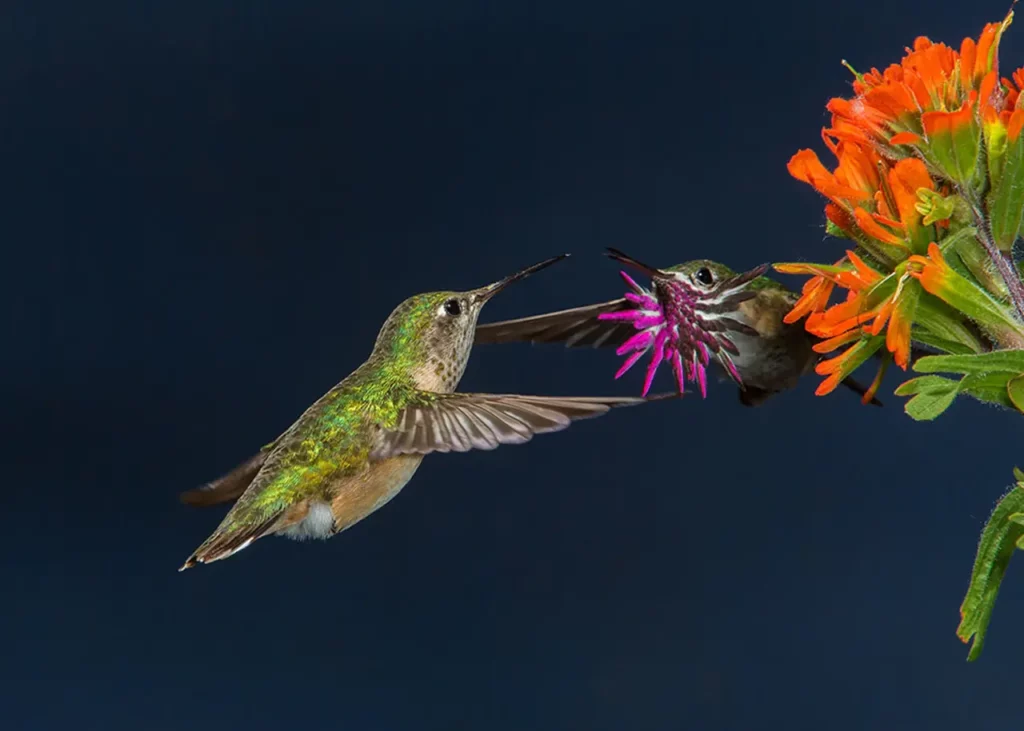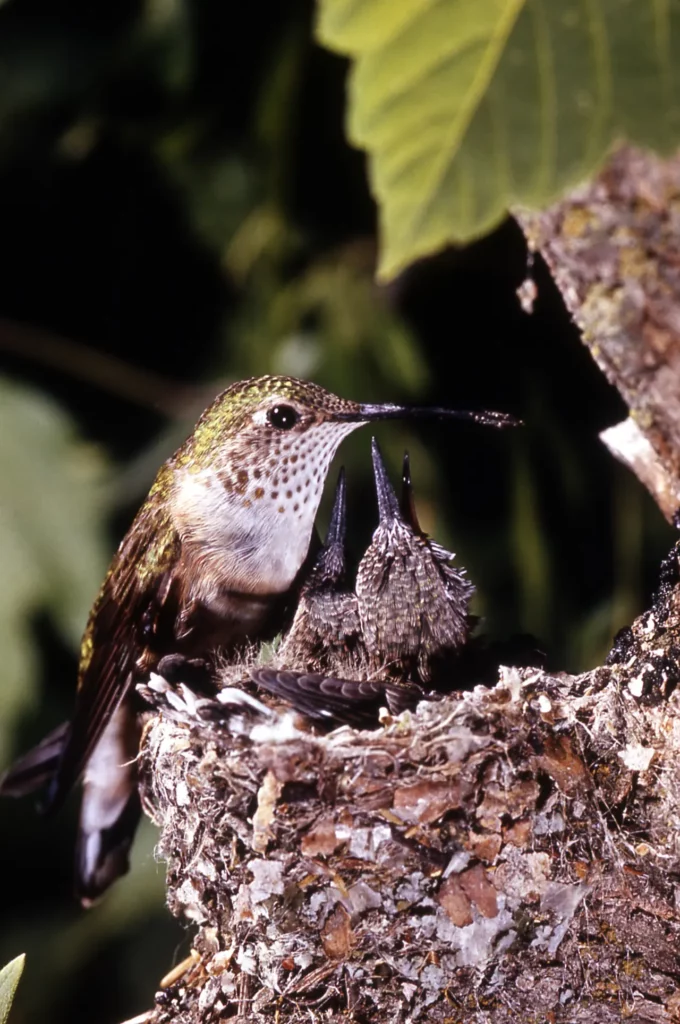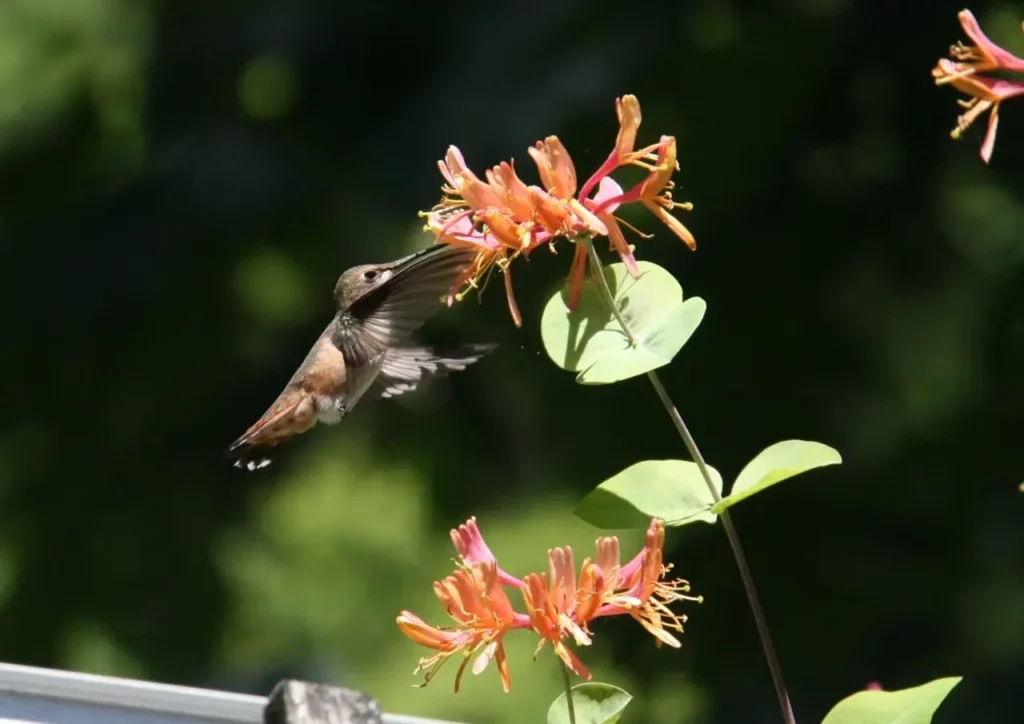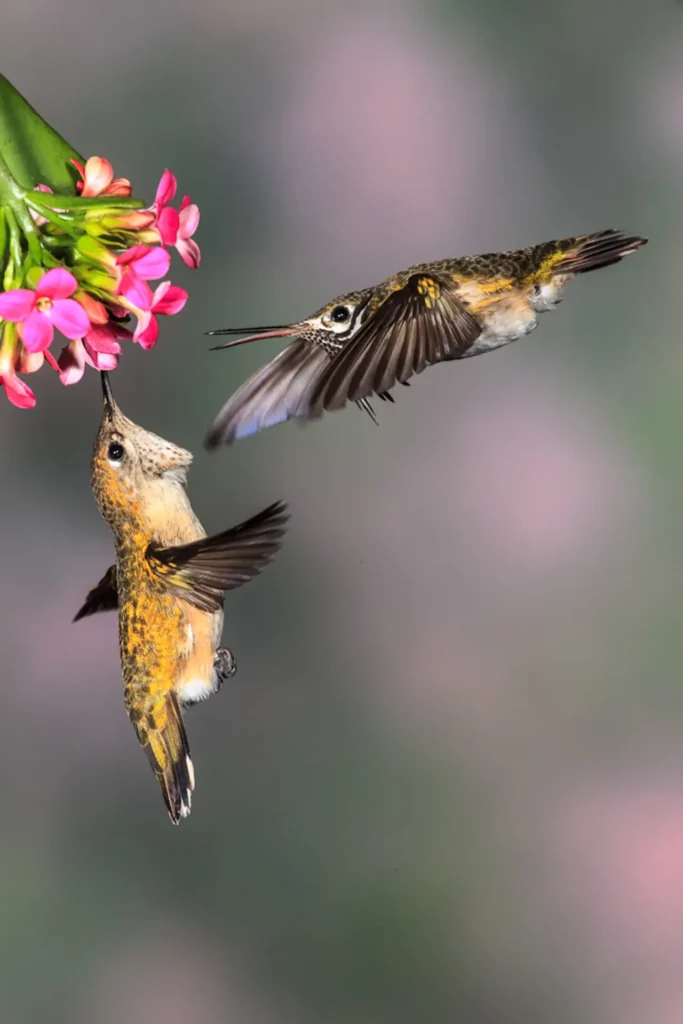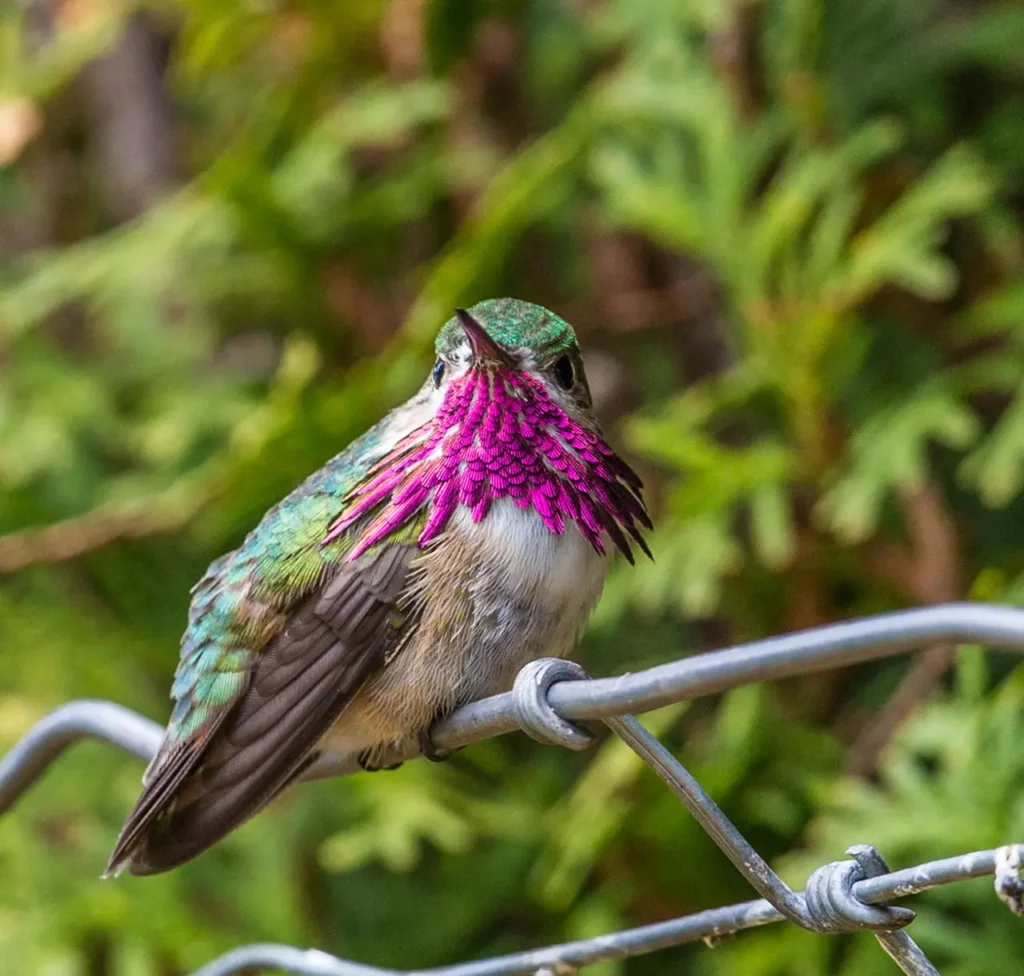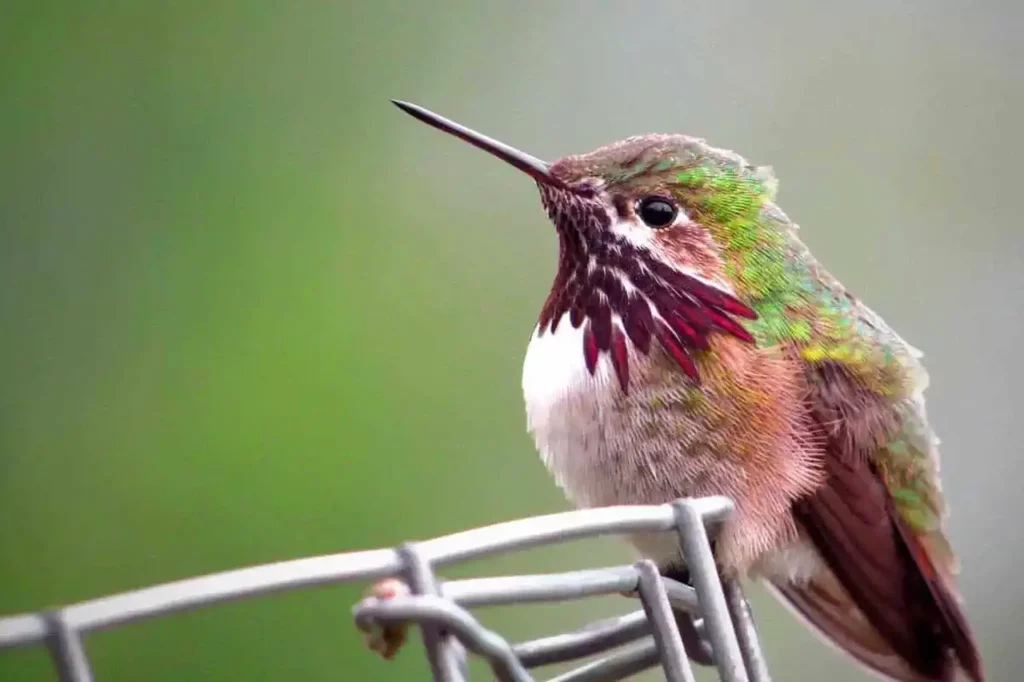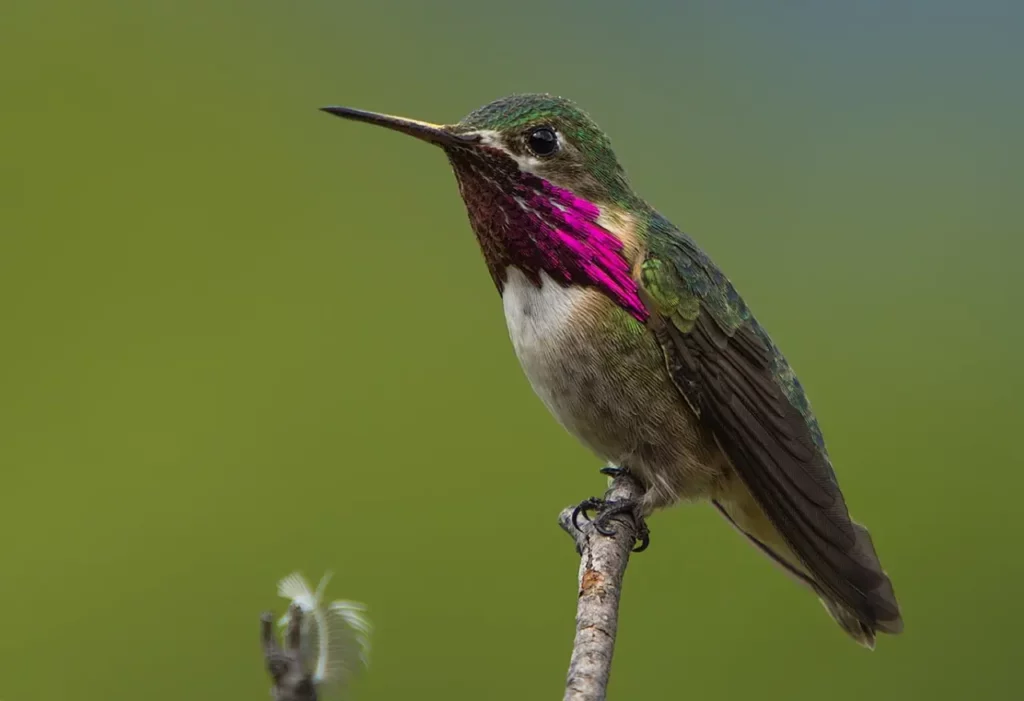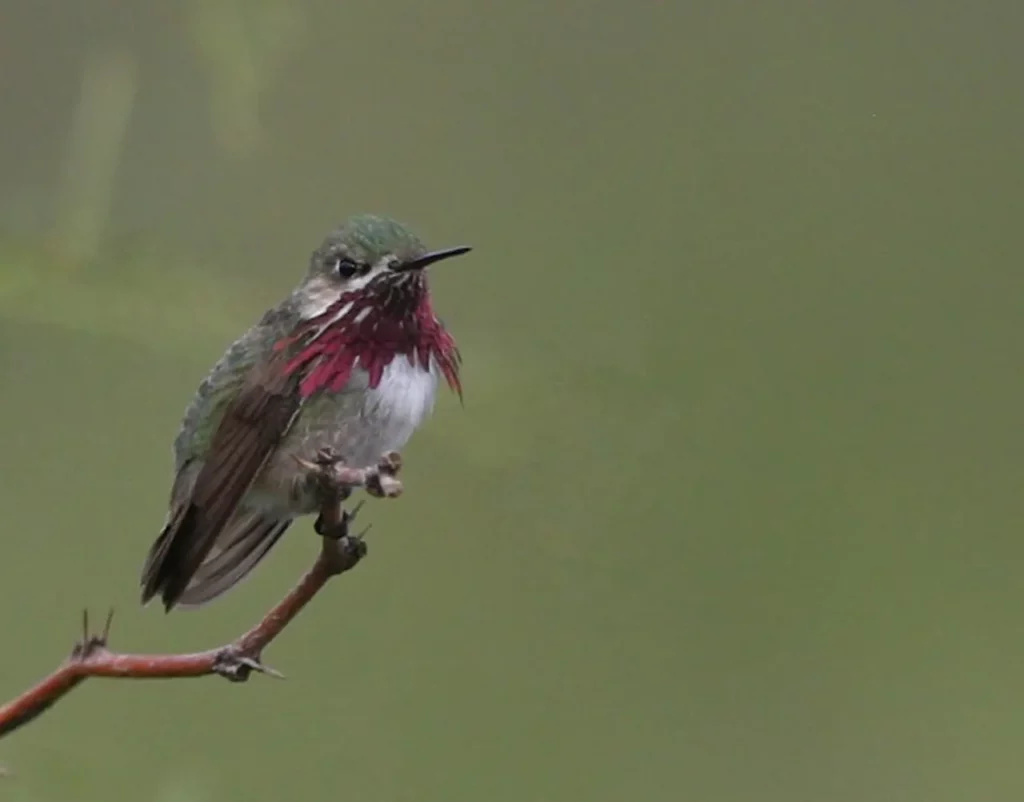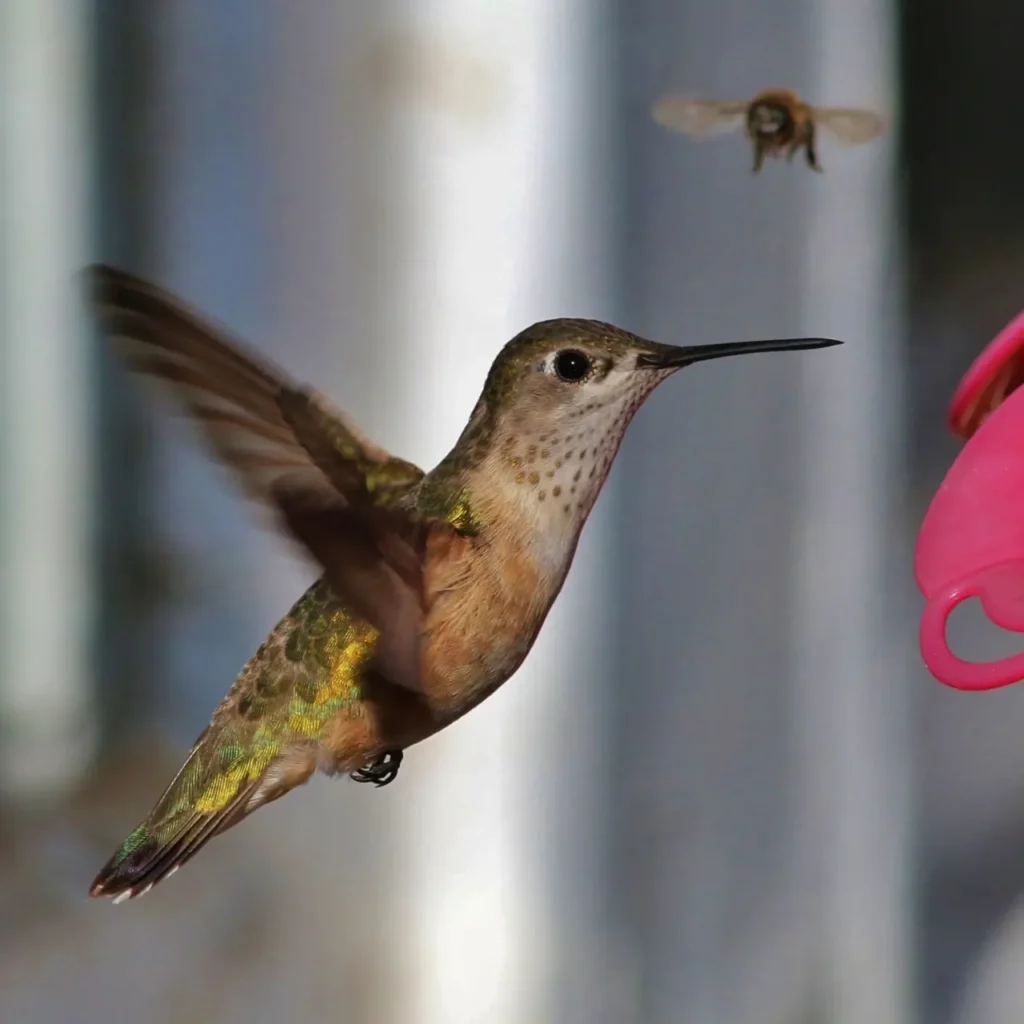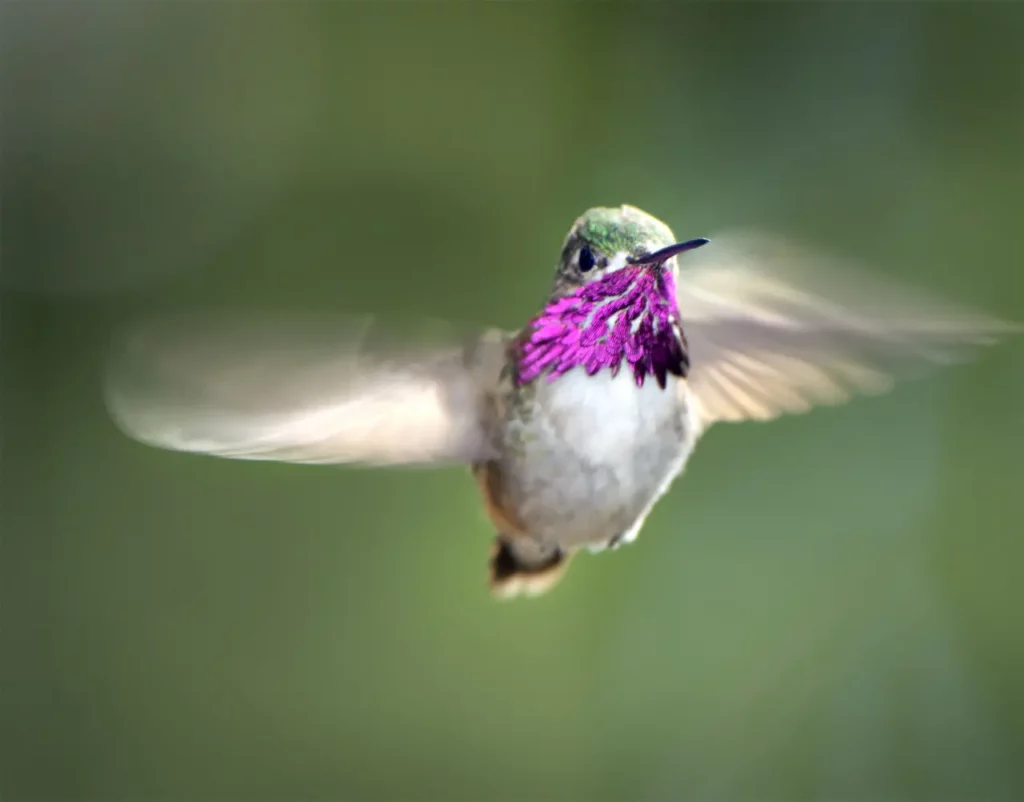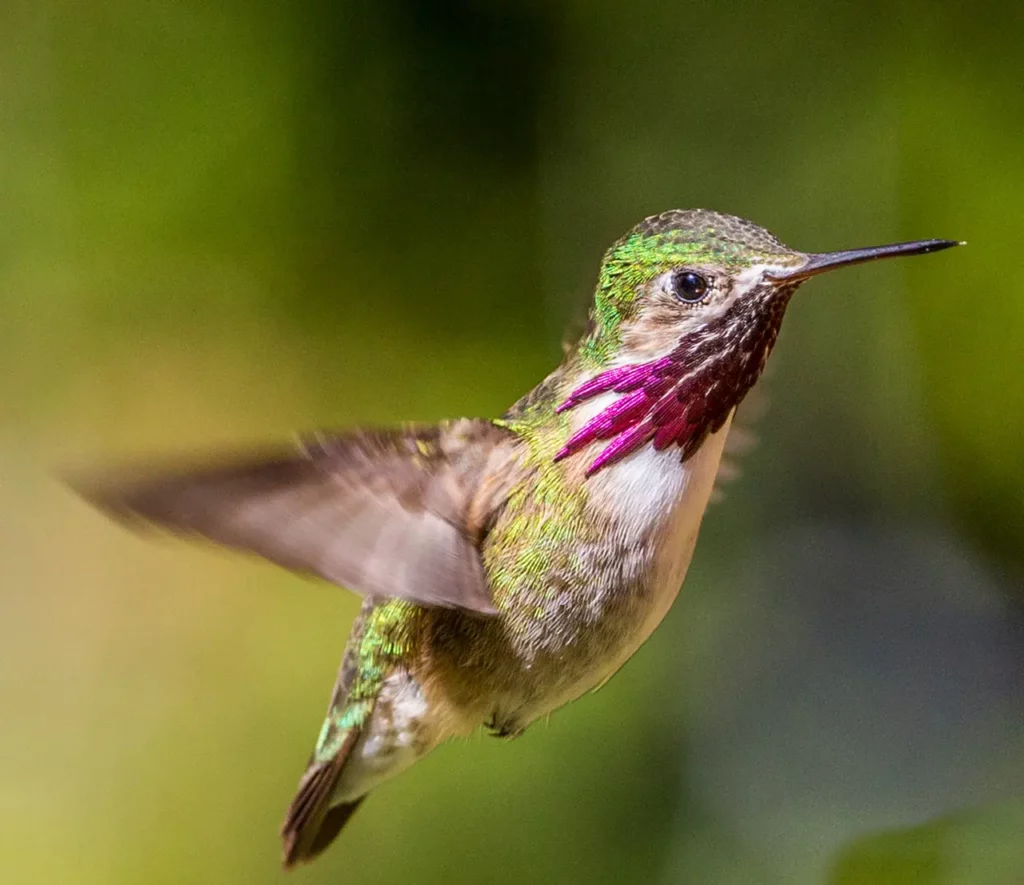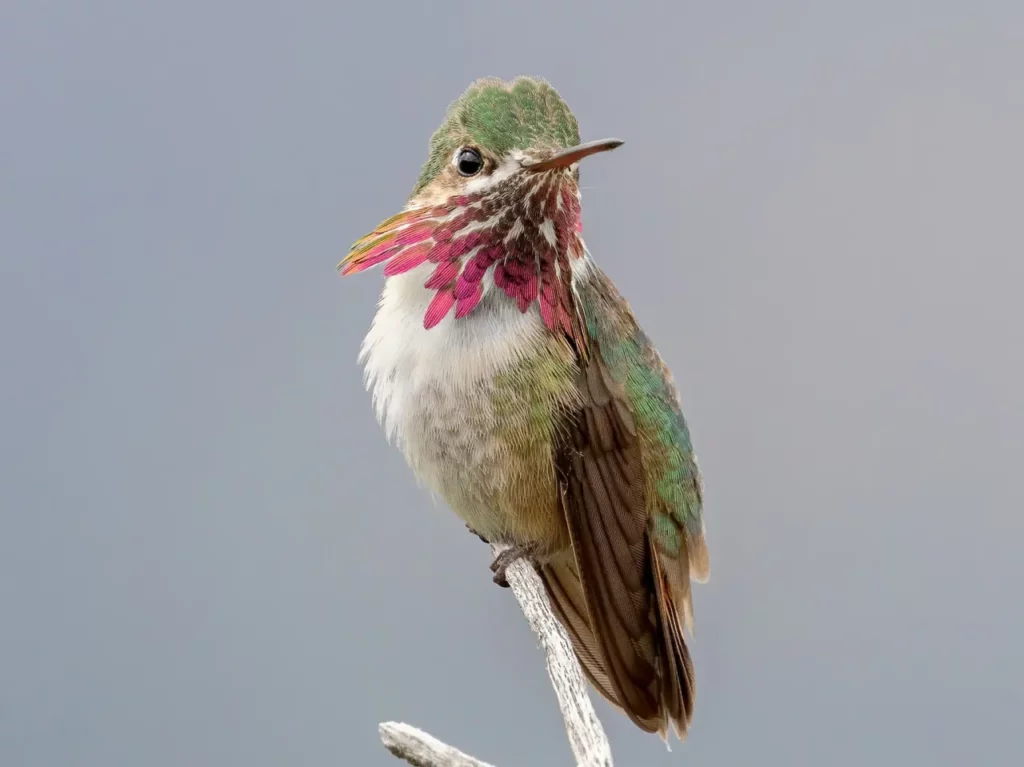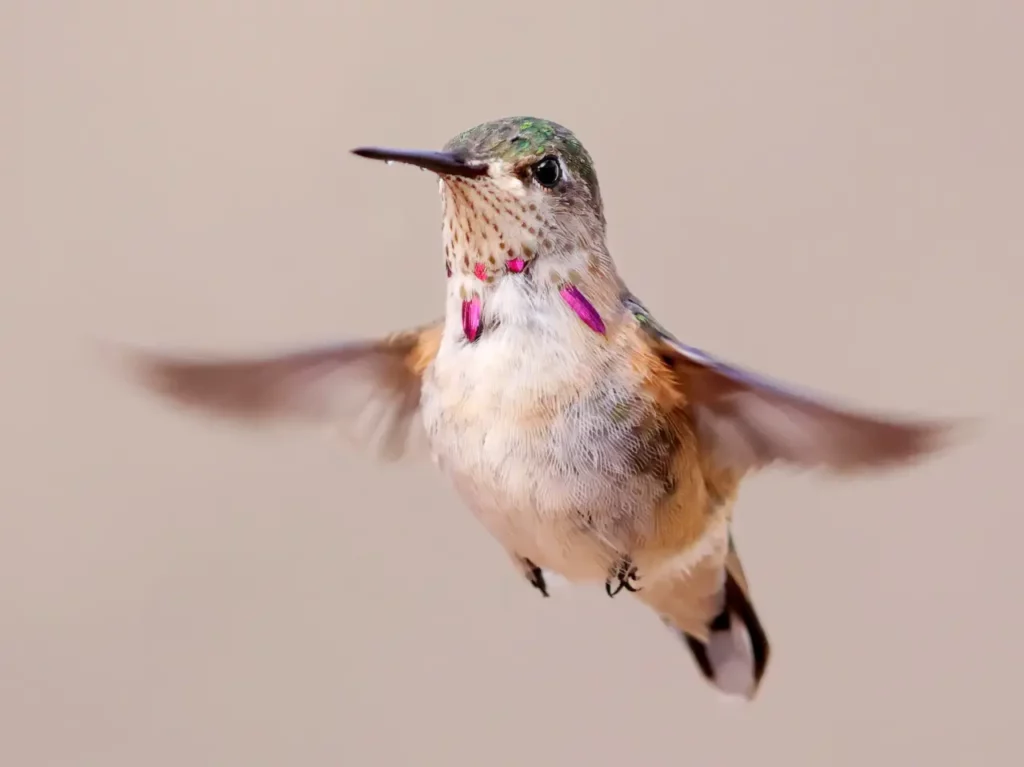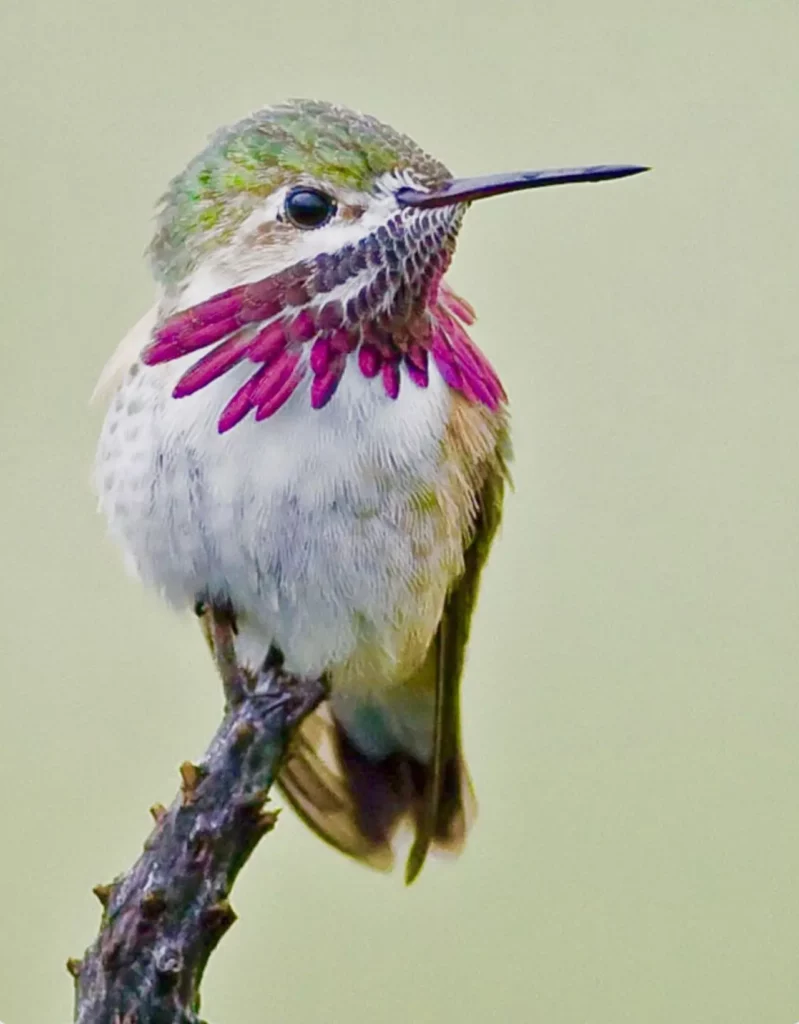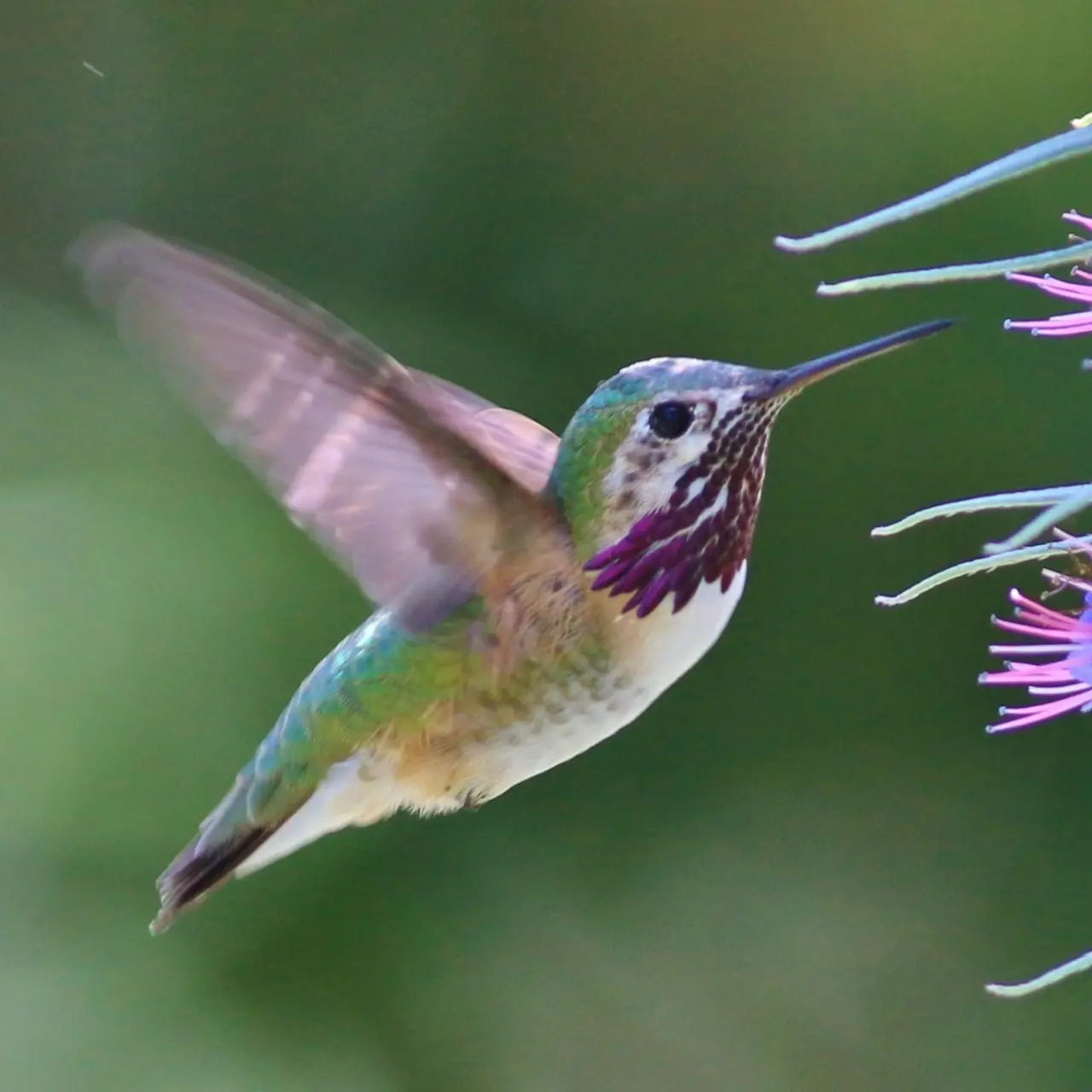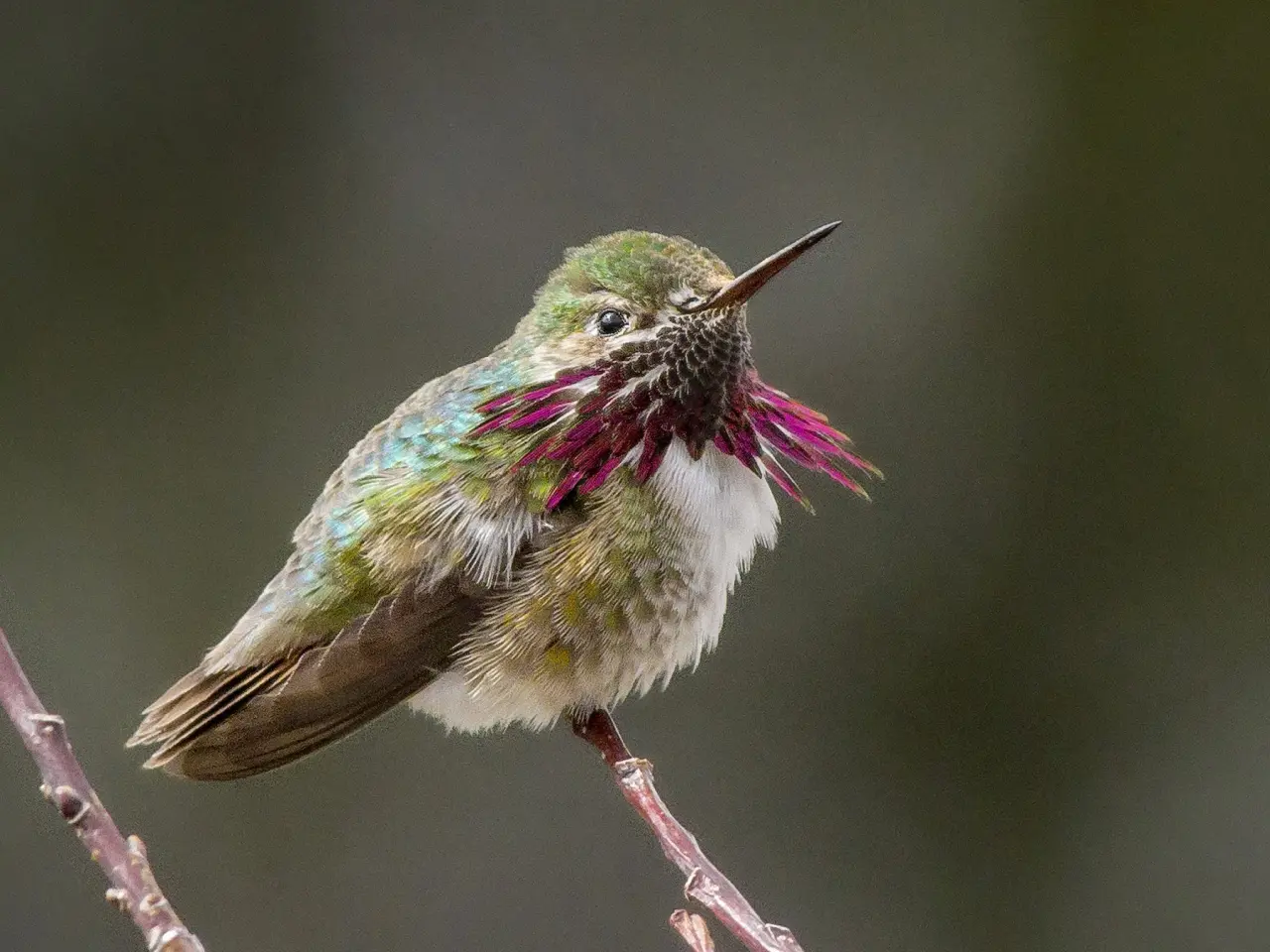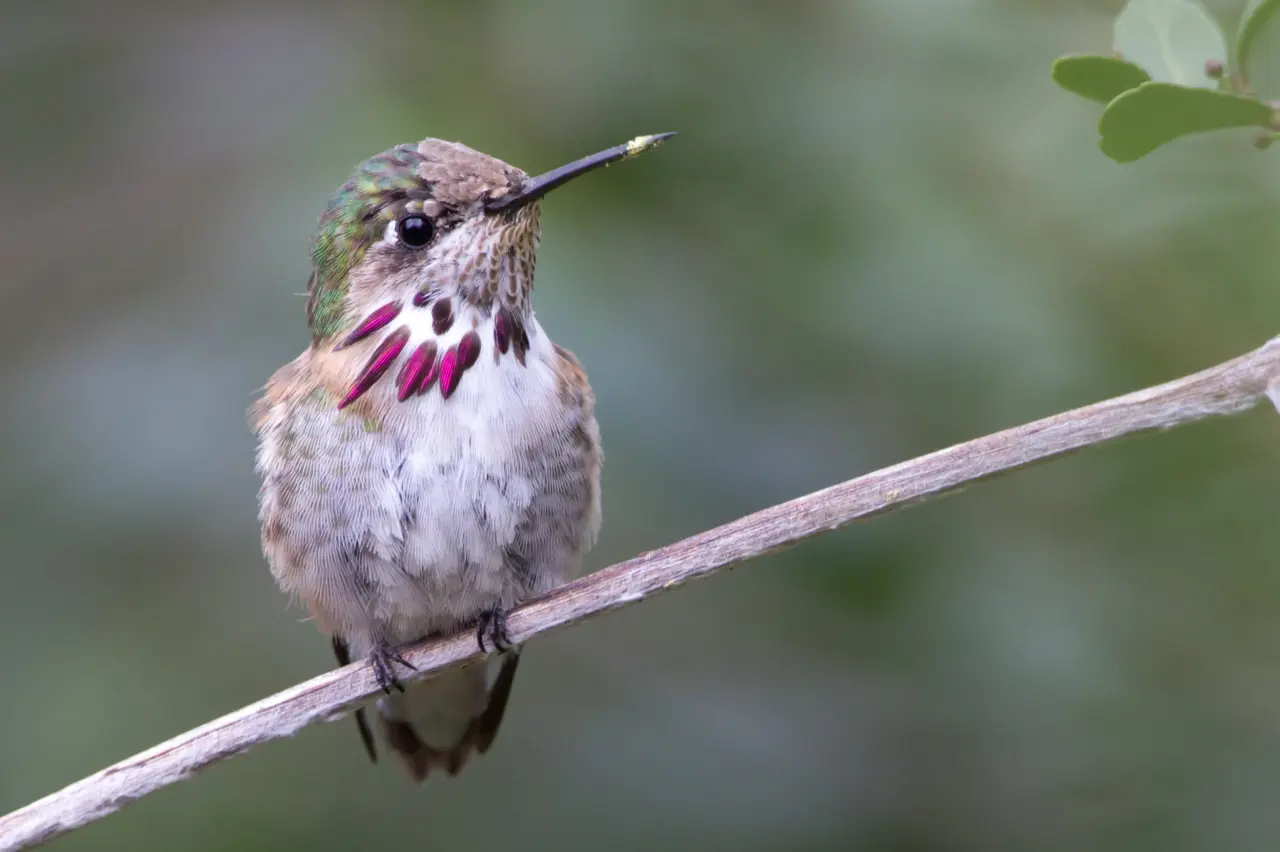Selasphorus calliope also known as the Calliope Hummingbird. Despite its diminutive size, this captivating creature possesses a charm and beauty that have enchanted bird enthusiasts for generations. In this article, we will delve into the enchanting world of the Selasphorus calliope – smallest bird species in the world, exploring its unique characteristics, habitat, behavior, and the wonders it brings to avian enthusiasts.
Appearance and Size
The Selasphorus calliope is the smallest long-distance avian migrant in the world, measuring merely 3.25 inches (8.25 cm) in length and weighing around 0.1 ounces (3 grams). The males boast an exquisite combination of iridescent green upperparts, a rosy-pink gorget (throat patch), and a white breast, which contrasts beautifully against their dark wings. Females exhibit a more subdued coloration, with green upperparts and a white or pale throat. Both sexes have a slender, curved bill, ideal for accessing nectar from flowers.
Habitat and Range
The Calliope Hummingbird breeds in mountainous regions of western North America, primarily in coniferous forests and mountain meadows. They are particularly associated with areas featuring a diverse array of flowering plants, as these serve as crucial sources of nectar. During the winter, they embark on a long and arduous migration to Central America and Mexico, where they seek milder climates and abundant food sources.
Unique Adaptations
Despite their small size, Calliope Hummingbirds possess remarkable adaptations that allow them to thrive in their challenging habitats. Their wings beat at an astonishing rate of around 80 times per second, enabling them to hover and maneuver with incredible precision. Additionally, they possess a long, extendable tongue that they use to extract nectar from flowers, ensuring a vital energy source for their demanding lifestyle.
Feeding and Foraging
The Calliope Hummingbird has a voracious appetite, and its diet primarily consists of nectar from a wide range of flowering plants, including penstemons, columbines, and paintbrushes. To supplement their nectar intake, they also consume small insects and spiders, which provide essential protein. These agile birds tirelessly search for flowers, probing deep into the blooms with their slender beaks to access the sweet reward within.
Mating Behavior and Song
During the breeding season, the males engage in courtship displays to attract females. These displays involve aerial acrobatics, with males ascending high into the sky before diving steeply and producing a distinctive buzzing sound produced by their wing feathers. Additionally, they emit a series of high-pitched, metallic chirps to communicate with other males and assert their territorial boundaries.
Conservation and Threats
While the Calliope Hummingbird is not currently considered endangered, it faces several conservation challenges. Habitat loss due to deforestation, climate change, and degradation of breeding and wintering sites pose significant threats. Furthermore, the indiscriminate use of pesticides and herbicides can harm their food sources and disrupt their delicate ecological balance. Conserving their habitats, planting native flowering plants, and promoting sustainable land-use practices are crucial for their long-term survival.
Appreciating the Jewel
The Selasphorus calliope, with its delicate beauty, agile flight, and captivating behaviors, brings joy and wonder to bird enthusiasts and nature lovers alike. By understanding and appreciating these remarkable creatures, we can play an active role in their conservation and ensure that future generations can marvel at the grace and brilliance
Selasphorus calliope Hummingbird images
